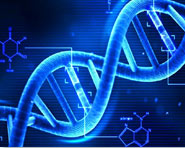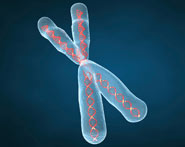


 النبات
النبات
 الحيوان
الحيوان
 الأحياء المجهرية
الأحياء المجهرية
 علم الأمراض
علم الأمراض
 التقانة الإحيائية
التقانة الإحيائية
 التقنية الحيوية المكروبية
التقنية الحيوية المكروبية
 التقنية الحياتية النانوية
التقنية الحياتية النانوية
 علم الأجنة
علم الأجنة
 الأحياء الجزيئي
الأحياء الجزيئي
 علم وظائف الأعضاء
علم وظائف الأعضاء
 الغدد
الغدد
 المضادات الحيوية
المضادات الحيوية|
Read More
Date: 15-2-2016
Date: 16-2-2016
Date: 16-2-2016
|
In a nucleic acid amplification test (NAAT), specific sequences of microbial DNA or RNA are identified using a nucleic acid primer that is amplified exponentially by enzymes to generate multiple copies of a target nucleotide sequence. The most commonly used NAAT is the polymerase chain reaction PCR. Reverse transcription PCR (RT-PCR) is used to detect RNA from RNA viruses. The use of fluorescent labels in the reaction enables ‘real-time’ detection of amplified DNA; quantification is based on the principle that the time taken to reach the detection threshold is proportional to the initial number of copies of the target nucleic acid sequence. In ‘broad range’ (bacterial) PCR the primers are targeted to parts of the gene that encode 16S ribosomal RNA (rRNA) that have shared DNA sequences across most bacteria. Between these shared DNA sequences, the 16S rRNA gene varies between species; so, using PCR, nucleotide sequencing of the product and comparison of the DNA sequence information with large databases, bacterial detection and species identification can be achieved. In multiplex PCR, multiple primer pairs are used to enable detection of several different organisms in a single reaction.
Determination of nucleotide sequences in a target gene(s) can be used to assign microorganisms to specific strains, which may be relevant to treatment and/or prognosis (e.g. in hepatitis C infection). Genes that are relevant to virulence (such as toxin genes) or antimicrobial resistance can also be detected; for example, the mecA gene can be used to screen for MRSA.
NAATs are the most sensitive direct detection methods and are also relatively rapid. They are used widely in virology, where the possibility of false-positive results from colonising or contaminating organisms is remote, and are applied to blood, respiratory samples, stool and urine. In bacteriology, PCR is used to examine CSF, blood, tissue and genital samples, and multiplex PCR is being developed for use in faeces. PCR is particularly helpful for microorganisms that cannot be readily cultured, e.g. Tropheryma whipplei, and is being used increasingly in mycology and parasitology.



|
|
|
|
هل تعرف كيف يؤثر الطقس على ضغط إطارات سيارتك؟ إليك الإجابة
|
|
|
|
|
|
|
مواكب مدينة القاسم تجدد عهد الولاء لإمامهم الكاظم "عليه السلام"
|
|
|